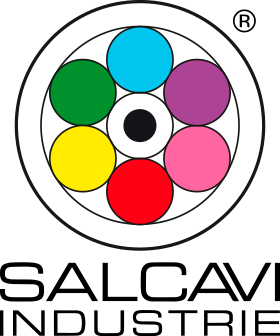REACH approved cables
The PVC-blend manufactured in Europe must also comply with the rules set out in the REACH Regulation, which imposes for all substances whose dangerousness is at least dubious to be registered and subsequently assessed in terms of safety and finally authorised for the provided use.
Phthalates account for approximately 93% of plasticisers used for PVC processing. They break down into two categories, having different properties and effects:
- Low molecular weight phthalates (Low Molecular Weight), with high migration power, such as DEHP, BBP, DBP, DIBP which feature from three to six carbon atoms in the main chain and which are classified as extremely concerning substances (SVHC) under the REACH Regulation bases on studies on animal reproduction.
- High molecular weight phthalates (High Molecular Weight), with low migration power, such as DINP, DIDP, DUP, DIUP, DTDP, LINEAR PHTHALATES; they feature at least eight carbon atoms in the main structure and account for approximately 85% of phthalates in Europe. These substances are included in the European Regulation on chemicals (REACH) though they do not appear among those substances that may pose a threat to human health or the environment.
The use of high-molecular weight phthalates does not imply any risk in the current applications. Indeed, phthalates do not require any classification in terms of their effects on health or the environment and they are not included in the list of candidate substances or substances subject to authorisation by the REACH Regulation. Phthalates are only subject to restricted use especially in products for children that may come in contact with the mouth. Phthalates are viscous liquids that firmly bind into PVC items and show minimum migration during normal use, also in abraded particles that may be collected in the form of dust particles.
Recently some further analyses were carried out based on new information having been made available: on the one side, the Department of Health of the Australian Government and, on the other, by the European Chemical Agency (ECHA). In the former case, within its programme on phthalate-related danger study, the Department of Health of the Australian Government issued a document on the danger of DINP in toys and baby care products in general. According to the Department, the assessment of the current risk in the use of DINP is reason for no concern for the health of children exposed to DINP through toys and baby care products, even though the worst possible exposure scenario were to be considered. Based on the conclusions of the study, no recommendation was required for the management of risk in the use of DINP in the considered applications. In the second case, the ECHA has updated the previous study on the risk associated with the use of DINP aw well as DIDP.
Not only did the study considered and analysed the use of the two phthalates in toys and baby care products (see restriction 52 in Annex XVII of the REACH), but it also investigated the danger for adult and young consumers alike in relation with direct contact exposure to the items, in the home setting or through food, also based on the bio-monitoring data available today.
Based on new scientific evidence, the ECHA has published a documents whose conclusions are reported below:
Children
- While restrictions in the use of toys and baby care products that may be in contact with the mouth appear reasonable and justified, any other measures do not appear as necessary to reduce the risk of exposing children to DINP and DIDP;
- No risk is expected because of the combined exposure to DINP and DIDP for children through food and in the home.
Adults
- The exposure through contact with the skin is not expected to cause any hazard for the adult population and for foetal development in pregnant women;
- The exposure through food and the home setting is not significant in the adult population.
 Conversely, low molecular weight phthalates (known as DEHP, DBP, DIBP and BBP) are classified as toxic agents for reproduction based on studies performed on animals and their use is regulated and included in Annex XIV of the REACH Regulation as "Substances of Very High Concern" and subject to authorisation according to the same REACH Regulation. Their use will be banned in Europe by February 2015, even though a formal authorisation may be granted for their use in very specific settings and instances.
Conversely, low molecular weight phthalates (known as DEHP, DBP, DIBP and BBP) are classified as toxic agents for reproduction based on studies performed on animals and their use is regulated and included in Annex XIV of the REACH Regulation as "Substances of Very High Concern" and subject to authorisation according to the same REACH Regulation. Their use will be banned in Europe by February 2015, even though a formal authorisation may be granted for their use in very specific settings and instances.
Our company, besides complying with all regulatory obligations under the REACH Directive, can provide, upon request, phthalate-free PVC cables bound tor the special applications described above.
